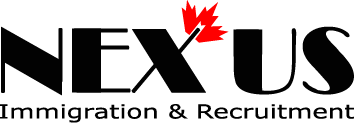
Overview of Schooling System for New Comer – Compulsory Education
Canada and the United States annually draw top technical talent immigrants globally, recognizing education as paramount for acquiring knowledge and skills. Particularly among East Asian and South Asian immigrants, education for their children is prioritized, reflecting the belief that ‘everything can be saved except education.’ These parents wholeheartedly support their children’s education, often without financial limit.
Unlike in Asian countries, compulsory education in North America is free. In Canada, residents with citizenship or permanent residency can enjoy free education from kindergarten through 12th grade. Even beyond this age, the adult education or extended education system ensures that all residents can complete an education equivalent to a high school diploma.
Compulsory education in Canada is federally mandated but locally administered, adapting to regional nuances. Alberta, rich in resources, excels in execution. Every participant in Alberta’s program receives an Alberta Student Number (ASN) via the myPass system, regardless of demographics. Residents lacking a Canadian high school diploma still have a legal entitlement to compulsory education, showcasing a unique aspect of Canadian law. Alberta’s education regulations further delineate eligibility by age, distinguishing between adult extended education and regular secondary systems.
First, we will discuss the various methods for obtaining a high school diploma or its equivalent. Then, we will outline the benefits for new immigrants of attending or completing the equivalent of local high school education.”
Adult Extended Education System:
Age Factors:
- As of September 1st each year, individuals who are 18 years old and have been out of school for a continuous period of 10 months.
- As of September 1st each year, individuals who are 20 years old but still have not completed a high school diploma or its equivalent.
- Individuals who are 18 years old and have never registered for K-12 education in Canada.
Types of Diplomas:
The system in Alberta is defined as the High School Equivalency Diploma, offering two options:
- Option 1: Canadian Adult Education Credential (CAEC)
(Includes 60 credits of academic scores and 40 credits of PASI (The Provincial Approach to Student Information) recognized credit enhancements) - Option 2: General Education Development (GED)
(As of May 3, 2024, the GED testing has been discontinued, replaced by Option 1’s CAEC)
Methods of Completion:
- Option 1: Canadian Adult Education Credential (CAEC)
- Mandatory subject credits
- Night school
- Summer school
- Correspondence schools
- Local adult education centers or extended education centers
- Academic Preparation courses at local community colleges
- Courses in Adult/Continued Education or Academic Preparation at local universities
- Alberta Student Information Processing (PASI)
- Complete courses beyond the mandatory subject credit list
- Individuals aged 21 or older can obtain credits based on age
- Write a 500-word essay each on travel or reading
- Option 2: General Education Development (GED)
- Direct participation in the GED examination
- Passing the GED exam with a score of 450 or higher.
- Mandatory subject credits
Regular Secondary Education System:
Age Boundary:
- As of September 1st each year, individuals who have turned 18 but not yet 20 and have not dropped out continuously for 10 months.
- As of September 1st each year, for those who are 18 years old.
Types of Diplomas:
Issued by the provincial government’s education department:
- Alberta High School Diploma
- Certificate of High School Achievement
- High School Completion Certificate
Completion Requirements:
Accumulate 100 credits, including:
- Language Arts
(30-level English or French; for full French schools, a 30-level English course is also mandatory) - Social Studies (30-level)
- Mathematics (20-level)
- Science (Physics, Chemistry, Biology) (20-level)
- Physical Education (10-level) (3 credits)
- Career and Life Management (3 credits)
- Additional Arts (10 credits)
- Other 30-level major subjects or career development training courses
(Mandatory and elective 30-level major courses may be required to participate in a provincial exam to earn full credits, with the final grade calculation being 70% classroom grade and 30% provincial exam grade)
Benefits of Compulsory National Education for Adult Immigrants:
Although the majority of new immigrants already possess college degrees or higher educational qualifications, irrespective of whether they are from English-speaking countries or have attended international schools in an all-English environment (note that international schools are not necessarily English-medium), immigrants still need time to adjust to the new environment upon arriving in Canada. Utilizing the resources of the compulsory national education system can help them quickly integrate into local communities and speed up the adaptation process. Some of the clear benefits include:
- Unless other language assessment, grades and transcript is valid for life time.
- Else general arts and trade subject can help new comer quickly adapt to local language usage.
- When applying for employment counseling, there is greater flexibility in choosing the desired courses. For example:
- Automotive technician training courses may require 10- or 20-level math and physics.
- Nursing training might require 30-level English and biology, as well as 20-level chemistry.
- Culinary professional training might require 10-level math or English.
- Possessing a 30-level English score can facilitate the approval process of English proficiency for those wishing to pursue further education in higher education institutions.
- Through classes, new immigrants not only learn new knowledge but also make new friends, rapidly expanding their network through classmates and teacher-student relationships.







